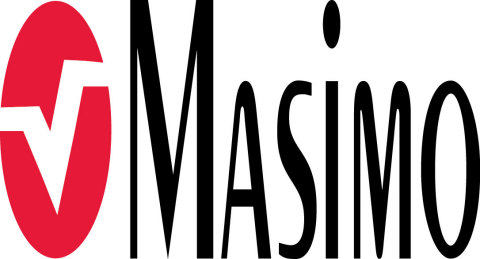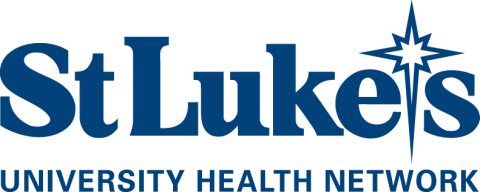BETHLEHEM, Pa.--(BUSINESS WIRE)--St. Luke’s University Health Network (St. Luke’s) and Masimo (NASDAQ: MASI) announced today that St. Luke’s, a regional network of 10 hospitals and 320 affiliated sites providing service to 10 counties in eastern Pennsylvania, is expanding their use of a variety of Masimo technologies following impressive outcome results at a pilot site.
Four years ago, seeking to improve patient safety and reduce morbidity and mortality in their hospitals, St. Luke’s formed a multidisciplinary taskforce – comprised of anesthesiologists, nurses, respiratory specialists, hospital leaders, and others – charged with implementing changes and tracking outcomes in a pilot location, a 34-bed orthopedic trauma ward at their hospital in Bethlehem. As part of that program, which also involved changes in clinical practice and alarm management, St. Luke’s installed Masimo Patient SafetyNet™, a supplemental remote monitoring and clinician notification system, in the pilot ward. Patients were monitored at the bedside using the Masimo Root® patient monitoring and connectivity hub in conjunction with Masimo Radius-7® tetherless, wearable Pulse CO-Oximeters® that continuously monitor patients’ oxygen saturation and pulse rate using Masimo SET® Measure-through Motion and Low Perfusion™ pulse oximetry. Through Patient SafetyNet, these and other parameters can be continuously remotely monitored from central view stations and even smartphones, with the ability to alert clinicians from afar to possible deterioration in patient condition. In 2016, a year after implementation of the program, clinicians achieved impressive outcome and financial results compared to 2015 performance, including a 62% reduction in mortality, a 36% reduction in naloxone administration, a 23% reduction in the utilization of telemetry, a 26% reduction in critical care transfers, and an estimated savings of $900,000 in cost avoidance.
“Because of the unpredictability of which patients will deteriorate, continuous and in-depth monitoring provides a valuable level of data that can be acted upon quickly to save lives,” said Aldo Carmona, MD, Chairman of the Department of Anesthesia and Critical Care and SVP of Clinical Integration, who leads the initiative. “Constant monitoring of changes in patient conditions will alert doctors and nurses when gradual deterioration is sensed, enabling a quicker therapeutic response and avoiding emergent situations.”
Following the successful pilot program, St. Luke’s expanded use of Patient SafetyNet to an additional 48 beds across two additional units on their Bethlehem campus. Now, three years later, the network is again expanding use of Patient SafetyNet and other Masimo solutions to almost 500 beds in total, so that all eight existing hospitals will have the technology – and in two hospitals slated to open this year, only Masimo continuous monitoring technologies will be used outside the ICU. Monitoring data is now automatically transferred from bedside devices and Patient SafetyNet to St. Luke’s Epic electronic medical record (EMR) system, helping improve productivity and reducing the likelihood of transcription errors.1 Vital Signs Check, an application for Root designed to streamline vital signs measurement workflows and optimize patient data management, is also being implemented. “With the higher acuity levels of many hospitalized patients, taking vital signs over four or eight hours is no longer effective in many cases, and developing conditions are missed until they become critical threats sometimes resulting in poor outcomes,” Dr. Carmona said.
Speaking of the ongoing expansion and enhancement of their continuous monitoring program, Dr. Carmona commented, “This Patient SafetyNet initiative will be the most important patient safety project I will work on in my whole career.”
St. Luke’s sought inspiration from another institution’s successful implementation of continuous monitoring using Masimo SET® and Patient SafetyNet: Dartmouth-Hitchcock Medical Center in New Hampshire, where researchers found that continuous monitoring of adult post-surgical patients using Masimo SET® pulse oximetry on Masimo bedside devices, in conjunction with Masimo Patient SafetyNet, resulted in a 65% reduction in rapid response team activations and a 48% reduction in transfers back to the ICU.2 Over five years, Dartmouth-Hitchcock achieved their goal of zero preventable deaths or brain damage due to opioids,3 and over ten years, they maintained a 50% reduction in unplanned transfers and a 60% reduction in rescue events, despite increases in patient acuity and occupancy.4 With the monitoring of additional physiological parameters and integration into EMRs, St. Luke’s initiative is set to provide even more continuous supplemental monitoring coverage than at Dartmouth-Hitchcock.
Joe Kiani, Founder and CEO of Masimo, said, “We are honored to partner with St. Luke’s as they continue to expand their patient safety and monitoring initiatives. Our mission – to improve patient outcomes and reduce the cost of care – aligns well with their values. Their ongoing commitment to saving lives through our proven SET® and Patient SafetyNet technology is a model we hope more and more institutions will see the benefits of implementing.”
@MasimoInnovates | #Masimo
About Masimo
Masimo (NASDAQ: MASI) is a global leader in innovative noninvasive monitoring technologies. Our mission is to improve patient outcomes and reduce the cost of care. In 1995, the company debuted Masimo SET® Measure-through Motion and Low Perfusion™ pulse oximetry, which has been shown over 100 independent and objective studies to outperform other pulse oximetry technologies.5 Masimo SET® has also been shown to help clinicians reduce severe retinopathy of prematurity in neonates,6 improve CCHD screening in newborns,7 and, when used for continuous monitoring with Masimo Patient SafetyNet™ in post-surgical wards, reduce rapid response activations and costs.2-4 Masimo SET® is estimated to be used on more than 100 million patients in leading hospitals and other healthcare settings around the world,8 and is the primary pulse oximetry at 9 of the top 10 hospitals listed in the 2018-19 U.S. News and World Report Best Hospitals Honor Roll.9 In 2005, Masimo introduced rainbow® Pulse CO-Oximetry technology, allowing noninvasive and continuous monitoring of blood constituents that previously could only be measured invasively, including total hemoglobin (SpHb®), oxygen content (SpOC™), carboxyhemoglobin (SpCO®), methemoglobin (SpMet®), Pleth Variability Index (PVi®), and more recently, Oxygen Reserve Index (ORi™), in addition to SpO2, pulse rate, and perfusion index (Pi). In 2014, Masimo introduced Root®, an intuitive patient monitoring and connectivity platform with the Masimo Open Connect® (MOC-9®) interface, enabling other companies to augment Root with new features and measurement capabilities. Masimo is also taking an active leadership role in mHealth with products such as the Radius-7® wearable patient monitor, iSpO2® pulse oximeter for smartphones, and the MightySat™ fingertip pulse oximeter. Additional information about Masimo and its products may be found at www.masimo.com. Published clinical studies on Masimo products can be found at http://www.masimo.com/evidence/featured-studies/feature/.
ORi has not received FDA 510(k) clearance and is not available for sale in the United States. The use of the trademark Patient SafetyNet is under license from University HealthSystem Consortium.
References
| 1. | The Value of Medical Device Interoperability. West Health Institute. 2013. | |||||
| 2. | Taenzer AH et al. Impact of pulse oximetry surveillance on rescue events and intensive care unit transfers: a before-and-after concurrence study. Anesthesiology. 2010:112(2):282-287. | |||||
| 3. | Taenzer A et al. Postoperative Monitoring – The Dartmouth Experience. Anesthesia Patient Safety Foundation Newsletter. Spring-Summer 2012. | |||||
| 4. | McGrath SP et al. Surveillance Monitoring Management for General Care Units: Strategy, Design, and Implementation. The Joint Commission Journal on Quality and Patient Safety. 2016 Jul;42(7):293-302. | |||||
| 5. |
Published clinical studies on pulse oximetry and the benefits of Masimo SET® can be found on our website at http://www.masimo.com. Comparative studies include independent and objective studies which are comprised of abstracts presented at scientific meetings and peer-reviewed journal articles |
|||||
| 6. | Castillo A et al. Prevention of Retinopathy of Prematurity in Preterm Infants through Changes in Clinical Practice and SpO2 Technology. Acta Paediatr. 2011 Feb;100(2):188-92. | |||||
| 7. | de-Wahl Granelli A et al. Impact of pulse oximetry screening on the detection of duct dependent congenital heart disease: a Swedish prospective screening study in 39,821 newborns. BMJ. 2009;Jan 8;338. | |||||
| 8. | Estimate: Masimo data on file. | |||||
| 9. |
http://health.usnews.com/health-care/best-hospitals/articles/best-hospitals-honor-roll-and-overview. |
About St. Luke’s
Founded in 1872, St. Luke’s University Health Network (SLUHN) is a fully integrated, regional, non-profit network of more than 15,000 employees providing services at 10 hospitals and over 320 outpatient sites. With annual net revenue greater than $2 billion, the Network’s service area includes 10 counties: Lehigh, Northampton, Berks, Bucks, Carbon, Montgomery, Monroe and Schuylkill counties in Pennsylvania and Warren and Hunterdon counties in New Jersey. Dedicated to advancing medical education, St. Luke’s is the preeminent teaching hospital in central-eastern Pennsylvania. In partnership with Temple University, St. Luke’s created the Lehigh Valley’s first and only regional medical school campus. It also operates the nation’s longest continuously operating School of Nursing, established in 1884, and 28 fully accredited graduate medical educational programs with 226 residents and fellows. St. Luke’s is the only Lehigh Valley-based health care system with Medicare’s five- and four-star ratings (the highest) for quality, efficiency and patient satisfaction. St. Luke’s is both a Leapfrog Group and Healthgrades Top Hospital. In 2019, three of IBM Watson Health’s 100 Top Hospitals were St. Luke’s hospitals. St. Luke’s University Hospital has earned the 100 Top Major Teaching Hospital designation from IBM Watson Health seven times total and five years in a row. St. Luke’s has also been cited by IBM Watson Health as a 50 Top Cardiovascular Program. Utilizing the Epic electronic medical record (EMR) system for both inpatient and outpatient services, the Network is a multi-year recipient of the Most Wired award recognizing the breadth of the SLUHN’s information technology applications such as telehealth, online scheduling and online pricing information. St. Luke’s is also recognized as one of the state’s lowest cost providers.
Forward-Looking Statements
This press release includes forward-looking statements as defined in Section 27A of the Securities Act of 1933 and Section 21E of the Securities Exchange Act of 1934, in connection with the Private Securities Litigation Reform Act of 1995. These forward-looking statements include, among others, statements regarding the potential effectiveness of Masimo Patient SafetyNet™, SET®, Root®, and Radius-7®. These forward-looking statements are based on current expectations about future events affecting us and are subject to risks and uncertainties, all of which are difficult to predict and many of which are beyond our control and could cause our actual results to differ materially and adversely from those expressed in our forward-looking statements as a result of various risk factors, including, but not limited to: risks related to our assumptions regarding the repeatability of clinical results; risks related to our belief that Masimo's unique noninvasive measurement technologies, including Masimo Patient SafetyNet, SET®, Root, and Radius-7, contribute to positive clinical outcomes and patient safety; risks related to our belief that Masimo noninvasive medical breakthroughs provide cost-effective solutions and unique advantages; as well as other factors discussed in the "Risk Factors" section of our most recent reports filed with the Securities and Exchange Commission ("SEC"), which may be obtained for free at the SEC's website at www.sec.gov. Although we believe that the expectations reflected in our forward-looking statements are reasonable, we do not know whether our expectations will prove correct. All forward-looking statements included in this press release are expressly qualified in their entirety by the foregoing cautionary statements. You are cautioned not to place undue reliance on these forward-looking statements, which speak only as of today's date. We do not undertake any obligation to update, amend or clarify these statements or the "Risk Factors" contained in our most recent reports filed with the SEC, whether as a result of new information, future events or otherwise, except as may be required under the applicable securities laws.




